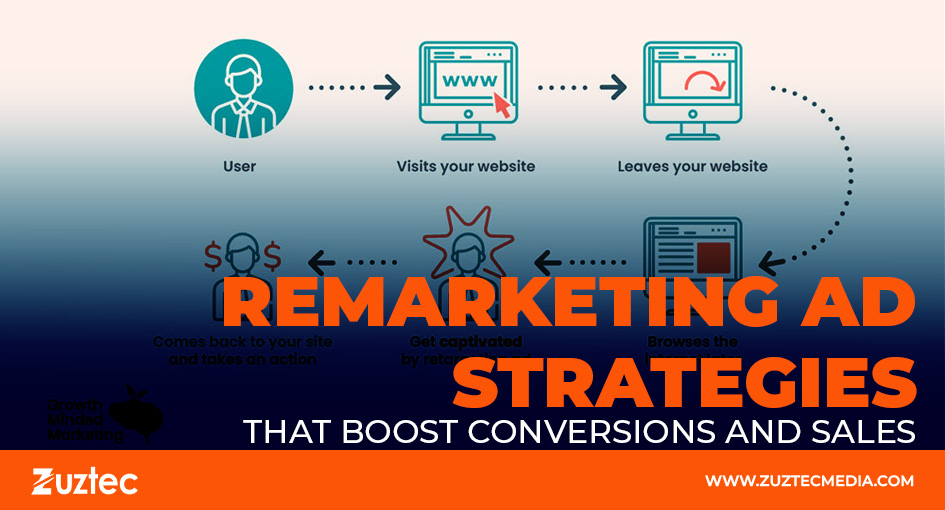
Remarketing Ad Strategies That Boost Conversions And Sales
In digital marketing, reaching new audiences is only part of the equation. Many businesses invest heavily in attracting visitors to their websites, yet most of those visitors leave without converting. This is where remarketing becomes crucial. By targeting users who have already interacted with your brand online, remarketing ad strategies can help bring them back and increase the chances of a sale or other desired action.
Remarketing ads work by tracking users who have previously visited your website or engaged with your app or social channels. Once identified, those users are shown tailored ads as they browse other websites, social media platforms, or video streaming services. The goal is to re-engage them with a message or offer that pushes them closer to conversion.
These ads are highly effective because they reach people who are already familiar with your brand and may have shown interest in your products or services. With the right strategy, you can segment audiences based on specific behaviors, like cart abandonment, time spent on certain pages, or actions taken, and deliver personalized content that addresses their needs or objections.
From dynamic product ads to sequential messaging, remarketing opens up a range of opportunities to refine your campaign. When executed properly, it not only improves conversion rates but also boosts return on ad spend.
Understanding The Power Of Remarketing Ad Strategies
Remarketing strategies focus on re-engaging users who have previously visited your website or interacted with your brand but did not convert. These strategies allow advertisers to stay top of mind by displaying targeted ads across platforms like Google Display Network, YouTube, and social media. Because the audience already has some awareness of the brand, remarketing ads tend to perform better than standard cold outreach.
The most common approach is pixel-based remarketing. This method uses a snippet of code, or pixel, placed on your website to track visitor behavior. Once a user leaves the site, the pixel helps trigger remarketing ads as they continue browsing the internet. This form of advertising can show dynamic content based on what pages the user visited or products they viewed.
List-based remarketing is another tactic, especially useful for email or CRM-driven campaigns. You upload a list of contacts, such as email subscribers or past customers, to platforms like Google Ads or Meta Ads Manager and serve them specific ad content. This strategy works well for re-engaging warm leads and encouraging repeat purchases.
Crafting Creative That Converts
The caliber of the ad creative is a major factor in the success of any remarketing campaign. The messaging must address the factors that may have prevented these users from converting, as they are already familiar with your brand. Price concerns, a lack of urgency, or the need for additional information are a few examples.
For example, offering a discount or a limited-time offer can help bring back users who abandoned their shopping cart. Similarly, showcasing customer testimonials or product reviews might reassure those who were on the fence about purchasing. Visual consistency between your site and ads also strengthens brand recall, which can improve click-through rates.
In the midbody of your campaign, remarketing ad strategies should adapt to user behavior. Someone who visited multiple product pages might need a different message than someone who only landed on the homepage. Tailoring creative to match those behaviors increases relevance and makes the ads feel less intrusive.
Measuring Success And Optimizing Performance
Like any digital strategy, the effectiveness of remarketing ad campaigns should be regularly measured and optimized. Important metrics include click-through rate (CTR), conversion rate, return on ad spend (ROAS), and frequency. A high frequency without engagement may suggest ad fatigue, while a low conversion rate could indicate messaging mismatches.
Testing different creatives, calls to action, and audience segments is essential. A/B testing allows you to determine what type of message, format, or offer works best. It’s also helpful to monitor the performance of each audience segment separately, as certain groups may require different approaches.
Frequency caps should be used to prevent users from seeing the same ad too often, which can lead to negative brand associations. Refreshing creative assets regularly helps keep campaigns fresh and engaging.
The Lasting Value Of Remarketing
These strategies continue to be a critical component in digital advertising. They help re-engage potential customers who have already shown interest and guide them back toward conversion. By using smart segmentation, tailored creative, and multi-platform delivery, businesses can maximize the return on their marketing efforts.
Whether you’re reminding users of a product they left in their cart or reintroducing your brand after an initial visit, remarketing keeps your message alive. In a competitive digital landscape, staying visible to warm audiences is often more cost-effective than constantly chasing new ones. When applied thoughtfully, remarketing ad strategies can drive long-term value and boost overall campaign performance.

